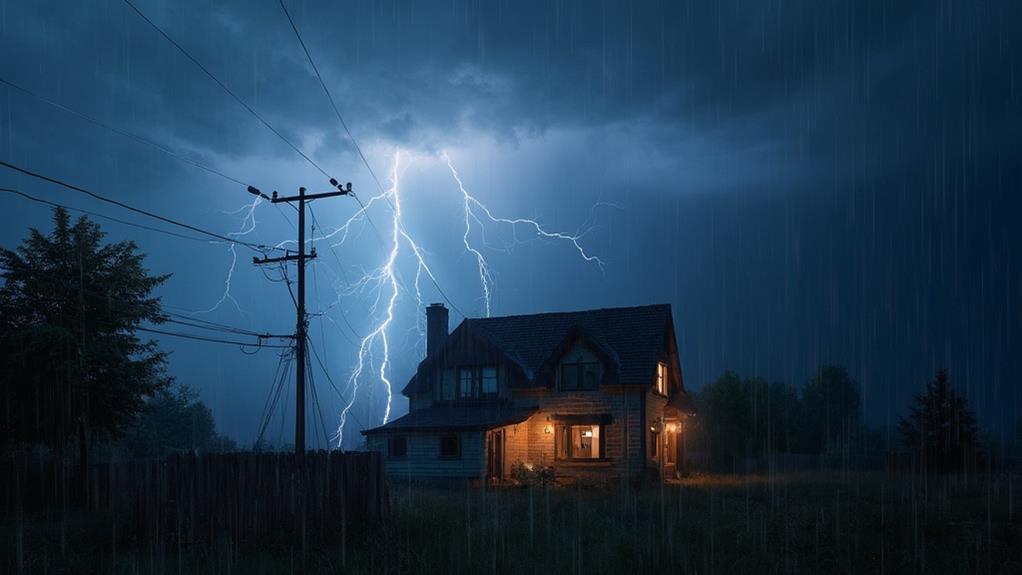Surge protection is essential for safeguarding your home's electrical system during storms. Power surges, brief spikes in voltage, can damage or destroy sensitive electronic equipment. Effective protection involves a layered approach, combining whole-house surge protectors installed at the main electrical panel with point-of-use devices for individual appliances. Whole-house systems intercept surges at the entry point, while point-of-use protectors offer localized defense. Identify vulnerable electronics, such as those with microprocessors or storing important data, and prioritize their protection. Regular maintenance and replacement of surge protection devices ensure ongoing safety. Understanding the types and implementation of surge protection can significantly enhance your home's electrical resilience.
Understanding Power Surges
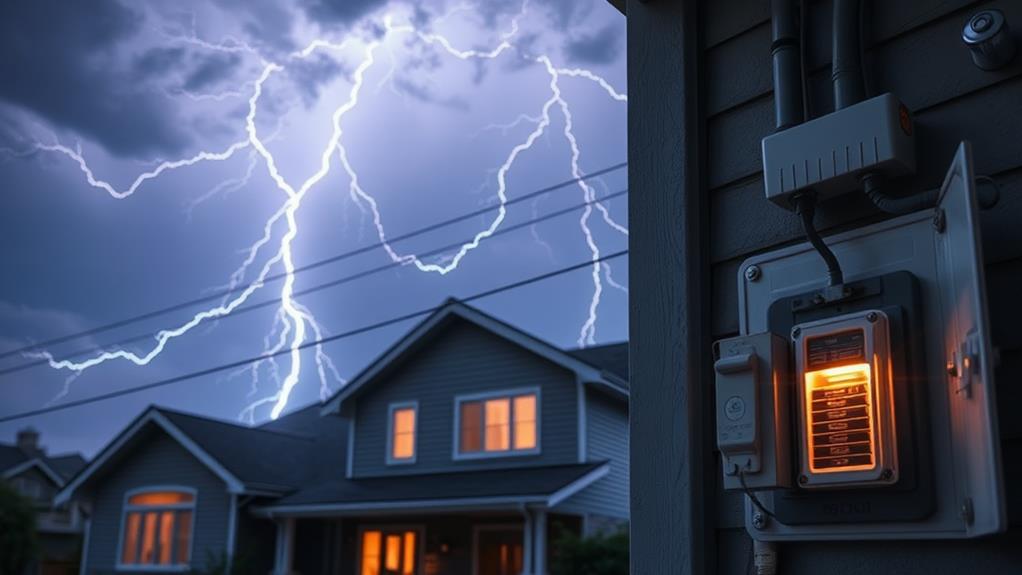
Power surges, brief spikes in electrical voltage, can occur dozens of times daily in the average household. These surges, ranging from minor fluctuations to significant voltage increases, can originate from various sources both inside and outside the home. External causes include lightning strikes, downed power lines, and utility company operations.
Internally, surges may result from the cycling of high-powered appliances like air conditioners or refrigerators.
While most minor surges go unnoticed, larger spikes can damage or destroy sensitive electronic equipment. Modern homes are particularly vulnerable due to the prevalence of sophisticated devices with microprocessors, such as computers, televisions, and smart home systems. These components are susceptible to even small voltage fluctuations.
The impact of power surges can be immediate and catastrophic, causing devices to fail instantly, or cumulative, gradually degrading electronic components over time. This progressive damage can lead to premature equipment failure, data loss, and increased utility costs. Understanding the nature and potential consequences of power surges is crucial for homeowners to take appropriate protective measures and safeguard their valuable electronic investments.
Types of Surge Protection Devices
Protection against power surges comes in various forms, each designed to safeguard electrical systems and devices from voltage spikes. The most common types of surge protection devices include point-of-use surge protectors, whole-house surge protectors, and uninterruptible power supplies (UPS).
Point-of-use surge protectors are typically power strips or individual plug-in devices that offer localized protection for specific electronics. These units redirect excess voltage to the ground, shielding connected devices from potential damage.
Whole-house surge protectors are installed at the main electrical panel and provide comprehensive protection for the entire home's electrical system. These devices intercept surges at the point of entry, preventing them from reaching individual circuits and appliances.
Uninterruptible power supplies combine surge protection with battery backup, offering both voltage regulation and temporary power during outages. UPS systems are particularly useful for sensitive electronic equipment like computers and servers.
Some advanced surge protection devices incorporate features such as electromagnetic interference (EMI) filters, voltage monitoring, and remote monitoring capabilities. When selecting a surge protection device, consider factors such as the joule rating, clamping voltage, and response time to ensure adequate protection for your specific needs.
Whole-House Surge Protection Systems
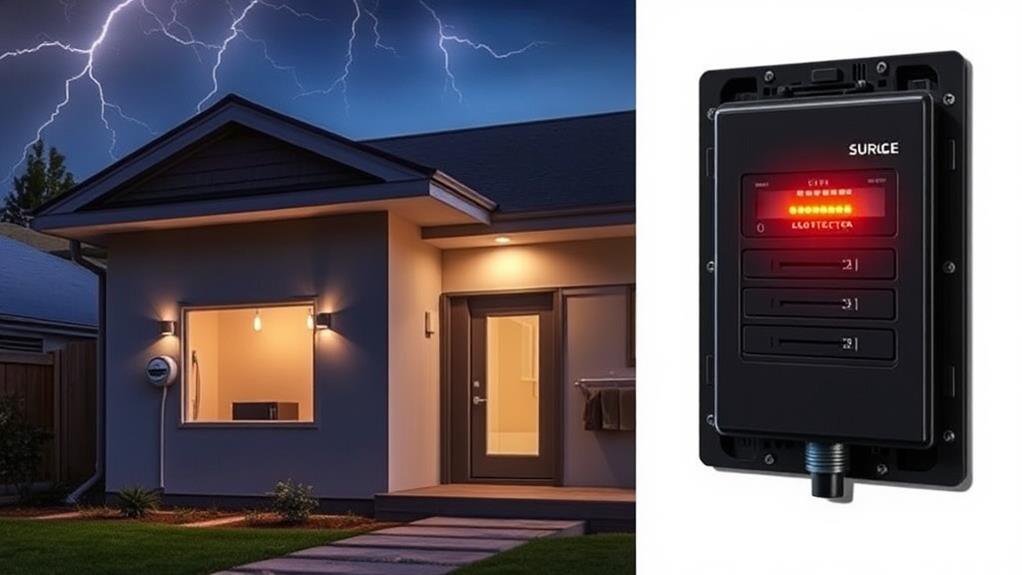
While point-of-use devices offer localized safeguards, whole-house surge protection systems provide comprehensive defense against voltage spikes for an entire property. These systems are typically installed at the main electrical panel or meter, intercepting surges before they enter a home's wiring.
Whole-house surge protectors use metal oxide varistors (MOVs) or silicon avalanche diodes (SADs) to divert excess voltage to the ground. They can handle much larger surges than plug-in devices, often absorbing up to 40,000 amps or more. This capacity makes them effective against both external threats, like lightning strikes, and internal surges from high-powered appliances.
Installation of whole-house systems requires a licensed electrician and may involve coordinating with the local utility company. While more expensive upfront than point-of-use options, these systems offer broader protection and can extend the lifespan of all connected electrical devices and appliances.
Many whole-house protectors include indicator lights to show operational status and some feature audible alarms to alert homeowners when the device has absorbed a significant surge. Regular maintenance and occasional replacement ensure continued protection against potentially damaging electrical events.
Point-of-Use Surge Protectors
You've likely encountered point-of-use surge protectors in homes and offices, often in the form of power strips with multiple outlets. These devices provide localized protection for specific electronics and appliances, complementing whole-house surge protection systems. Point-of-use protectors are designed to absorb excess voltage and divert it safely to ground, preventing damage to connected devices.
These surge protectors typically feature multiple outlets, allowing users to plug in several devices simultaneously. Many models also include USB ports for charging mobile devices. When selecting a point-of-use surge protector, consider its joule rating, which indicates the device's energy absorption capacity. Higher joule ratings offer greater protection against powerful surges.
Look for surge protectors with indicator lights that show when protection is active and when the device needs replacement. Some advanced models include automatic shutdown features that cut power when surge protection is compromised. For optimal protection, use point-of-use surge protectors for valuable electronics like computers, TVs, and gaming consoles. Remember that these devices have a finite lifespan and should be replaced periodically, especially after major surge events, to maintain effective protection for your electronic investments.
Lightning Rods and Grounding
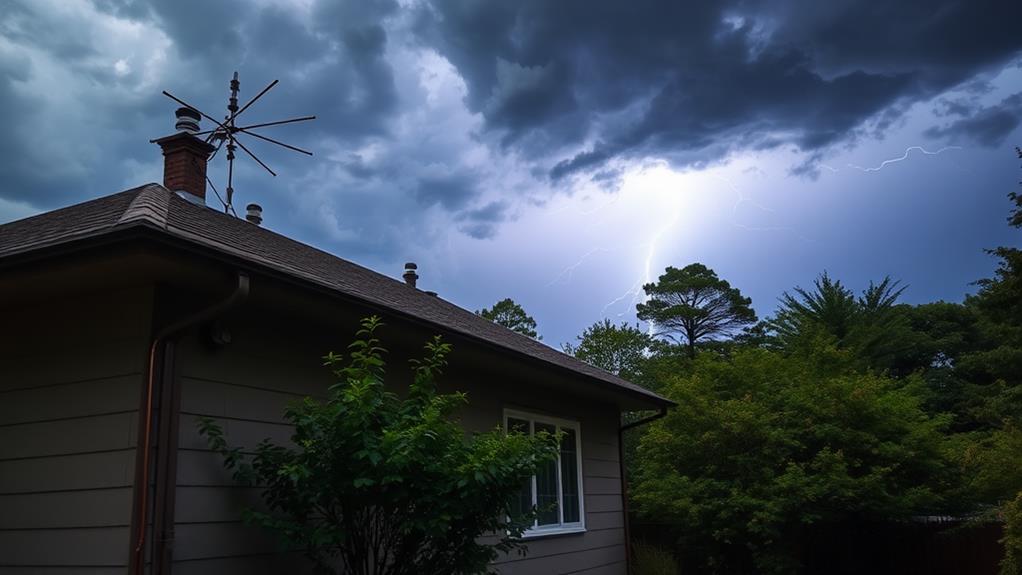
When it comes to safeguarding buildings from lightning strikes, lightning rods and proper grounding play a crucial role in surge protection. Lightning rods, typically made of copper or aluminum, are installed on the highest points of a structure to intercept lightning strikes. These rods are connected to a network of conductors that safely channel the electrical current into the ground, diverting it away from the building and its occupants.
Proper grounding is essential for the effectiveness of lightning protection systems. It involves creating a low-resistance path for the electrical charge to dissipate into the earth. This is achieved through a combination of ground rods, buried conductors, and connections to the building's metal components. The grounding system should be designed to handle the high currents associated with lightning strikes and maintain a low impedance path to the earth.
Regular maintenance and inspection of lightning protection systems are crucial to ensure their continued effectiveness. This includes checking for loose connections, corrosion, and damage to components. Additionally, as buildings undergo renovations or changes, the lightning protection system should be reassessed and modified accordingly to maintain optimal protection against potentially devastating lightning-induced surges.
Identifying Vulnerable Electronics
In the realm of surge protection, identifying vulnerable electronics is a critical step in developing an effective safeguarding strategy. Modern homes contain numerous devices susceptible to power surges, ranging from essential appliances to sophisticated entertainment systems. Common vulnerable items include computers, televisions, gaming consoles, smart home devices, and high-end kitchen appliances.
To identify vulnerable electronics, consider their value, sensitivity, and importance to daily life. Devices with microprocessors or digital components are particularly at risk. Look for items that would be costly or inconvenient to replace, such as HVAC systems, refrigerators, and washing machines. Also, consider devices that store important data, like computers and external hard drives.
Pay attention to electronics connected directly to power outlets, as they are more exposed to surges. Devices plugged into extension cords or power strips without built-in surge protection are also at higher risk. By systematically assessing each room and cataloging vulnerable items, homeowners can prioritize protection measures and allocate resources effectively. This process ensures that the most critical and sensitive electronics receive appropriate surge protection, minimizing potential damage during electrical disturbances.
Implementing a Layered Approach
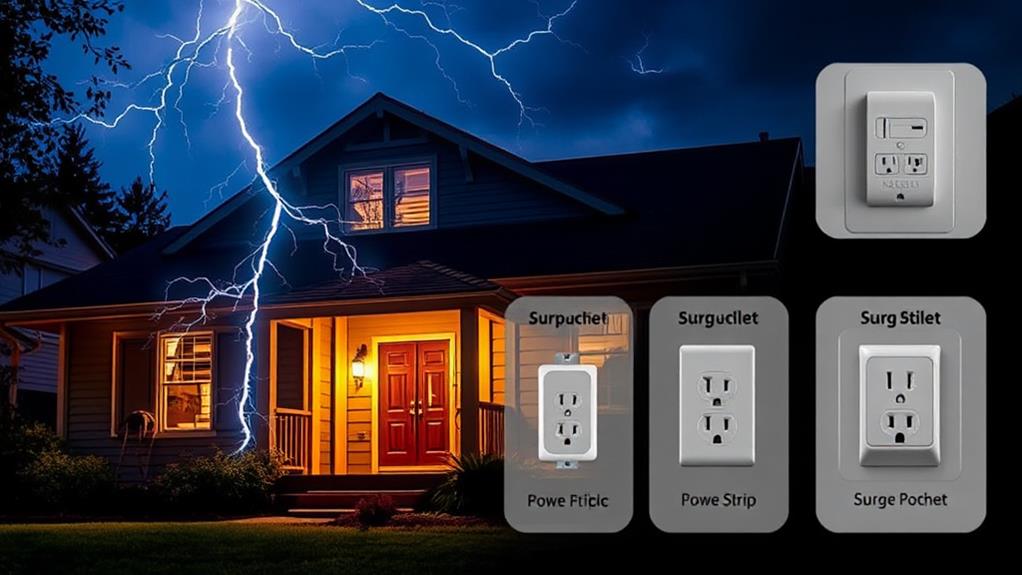
To effectively protect vulnerable electronics from power surges, implementing a layered approach is crucial. This strategy involves utilizing multiple levels of surge protection throughout your home's electrical system.
The first layer begins at the main electrical panel, where a whole-house surge protector can be installed to intercept large surges entering from outside. This device acts as the primary defense, reducing the intensity of incoming surges before they reach individual circuits.
The second layer involves installing surge protectors at individual outlets or power strips where sensitive electronics are connected. These point-of-use devices offer more localized protection against residual surges that may bypass the whole-house protector. For critical equipment, consider using uninterruptible power supplies (UPS) as an additional layer of protection. UPS systems not only guard against surges but also provide temporary backup power during outages.
Lastly, don't overlook the importance of proper grounding in your home's electrical system. A well-grounded system helps dissipate excess electrical energy safely. Regular maintenance and inspection of your surge protection devices ensure their continued effectiveness. By implementing this multi-layered approach, you significantly reduce the risk of damage to your valuable electronics during power surges.
Maintenance and Replacement Schedule
Maintaining a regular schedule for surge protector maintenance and replacement is crucial for ensuring continuous protection of your electronic devices. Most surge protectors have a limited lifespan and gradually lose their effectiveness over time due to repeated power surges and normal wear and tear.
Inspect your surge protectors every six months for signs of damage, such as discoloration, burning odors, or malfunctioning indicator lights. Replace any damaged units immediately. Even if no visible damage is present, consider replacing whole-house surge protectors every 2-3 years and point-of-use devices every 3-5 years, depending on their quality and usage.
Keep a log of installation dates and any significant power events to track each protector's age and potential degradation. Some advanced surge protectors feature end-of-life indicators, alerting you when replacement is necessary. During your bi-annual inspections, test outlet-based surge protectors using a surge protector tester to ensure they're still functioning correctly.
After major electrical storms or power outages, conduct an additional inspection of all surge protection devices. If you're unsure about the condition or effectiveness of your surge protectors, consult a licensed electrician for a professional assessment and recommendations.
Frequently Asked Questions
Can Surge Protectors Prevent Damage From Direct Lightning Strikes?
Surge protectors are not designed to protect against direct lightning strikes. While they can safeguard against minor power surges, the immense energy from a direct lightning strike overwhelms most consumer-grade surge protection devices, potentially causing significant damage.
How Do Surge Protectors Affect Energy Efficiency and Electricity Bills?
Surge protectors are miracle workers for your wallet! They dramatically slash energy consumption by eliminating phantom loads and optimizing power flow. This efficiency can lead to astonishing reductions in electricity bills, potentially saving homeowners hundreds annually.
Are There Any Potential Drawbacks or Risks to Using Surge Protectors?
While surge protectors offer valuable protection, potential drawbacks include false sense of security, limited lifespan, and possible fire hazard if overloaded. They may also slightly increase energy consumption and can become ineffective if not properly maintained or replaced.
Can Surge Protectors Be Used With Solar Panel Systems?
Like a shield protecting a medieval castle, surge protectors can indeed be used with solar panel systems. They safeguard sensitive inverters and other components from voltage spikes, ensuring the longevity and efficiency of your solar investment.
Do Surge Protectors Work With Smart Home Devices and Iot Appliances?
Surge protectors can indeed work with smart home devices and IoT appliances. They provide an additional layer of protection against voltage spikes for these sensitive electronic devices, helping to safeguard their components and extend their lifespan.
Conclusion
In safeguarding homes against electrical storms, a multi-layered approach to surge protection emerges as essential, much like Odysseus' complex defenses against the Sirens. Whole-house systems, point-of-use devices, and proper grounding form a triad of protection, echoing the three-headed guardian Cerberus. Regular maintenance and timely replacement of surge protectors ensure continued vigilance, akin to Argus' ever-watchful eyes. By implementing these measures, homeowners can fortify their electrical systems against the capricious nature of power surges.
